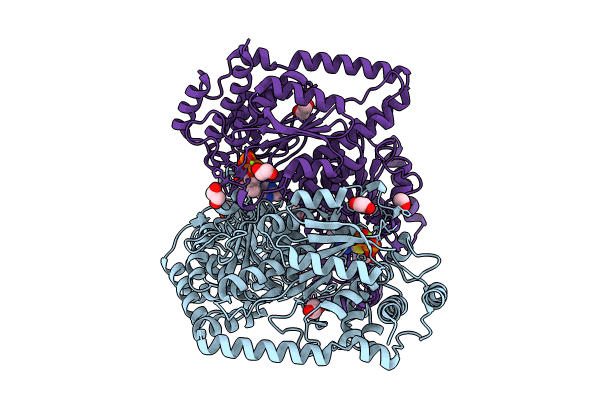
Deposition Date
2023-09-22
Release Date
2024-02-07
Last Version Date
2024-02-28
Entry Detail
PDB ID:
8QMF
Keywords:
Title:
Transketolase from Vibrio vulnificus in complex with thiamin pyrophosphate
Biological Source:
Source Organism:
Vibrio vulnificus YJ016 (Taxon ID: 196600)
Host Organism:
Method Details:
Experimental Method:
Resolution:
2.10 Å
R-Value Free:
0.20
R-Value Work:
0.16
R-Value Observed:
0.16
Space Group:
P 1 21 1


